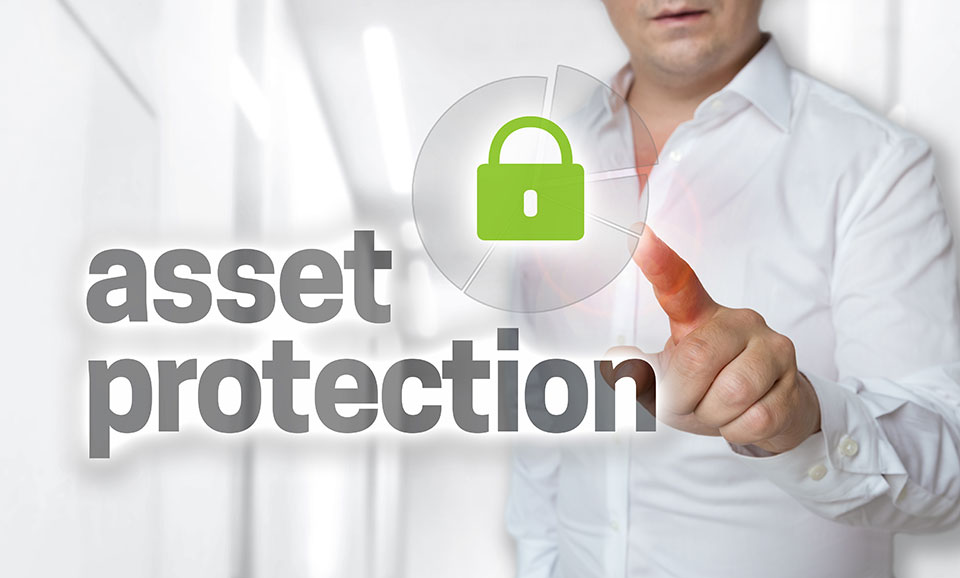Asset Protection For CEOs: A Comprehensive Guide

Some business owners know how to protect their assets, while some don’t while threats to their wealth increase and lawsuits become the next big business. For every 60 minutes you spent creating money, you should also spend 60 seconds thinking on ways of protecting it. Therefore, you must consider an asset protection plan.
Asset protection begins with a sound plan. It’s the legal procedure of securing both your personal and corporate assets to prevent future threats and creditors from reaching them. With a solid asset protection plan, you’ll be safeguarded from any and every possible financial risk. Making money isn’t the difficult part nowadays, it’s keeping it. Check https://blakeharrislaw.com/ and other websites if you’re looking for law firms specializing in asset protection planning.
To safeguard your assets from exposure to potential lawsuits, an effective asset protection strategy will use a range of options. Use this guide to safeguard your business from risk.
Decide on a Business Structure
Initially, your firm may be run as a sole proprietorship with no official legal system. Because of this, there’s no legal structure to protect you if you are sued when your worker or independent contractor is injured. Consider incorporating your firm with these options to protect your assets:
- Limited liability company (LLC): The Internal Revenue Service considers LLC a pass-through entity, meaning the profits are reported on the owners’ or members’ tax returns. By forming an LLC, you could create a separate legal entity. If established and run properly, it protects the entity’s assets from its owners’ personal debts and protects the owners’ assets from the LLC’s liabilities.
- C Corporation. Like an LLC, this business structure separates your personal and business assets. Also, a C corporation has a board of directors and shareholders, although it’s frequently highly regulated.
- S Corporation. An S corporation offers liability protection, but unlike a C corporation, profits flow to the owner or shareholders and are taxed only once. LLCs also distribute profits differently from S corporations, which can only have one class of stock and your ownership determines your share of pass-through revenue. However, an LLC’s class of interest is not connected to its ownership percentage. The LLC’s operating agreement can set the pass-through percentage. Also, S corporation stock is transferable, but LLC interest is not.
- General Partnership. This business structure requires two persons for an agreement. Because each owner is personally liable for the business’s debts, a general partnership agreement provides less asset protection compared to the last three options mentioned above.
Keep Valuable Business Assets Apart from Your Business Manufacturing Operations
Intellectual property, which includes patents and trademarks, is often the most valuable asset of a manufacturing company. Other significant firm assets include your business real estates, such as your manufacturing plant or factory.
Protect your assets by legally separating these valuable assets from your manufacturing activity as they will still be utilized by your company but not a legal part of it. Your intellectual property should ideally be owned by a different LLC. You then pay a royalty to the LLC if you use the LLC’s intellectual property. Because you eliminated your intellectual property as an asset of your company, its creditors can’t take it from you.
Build the Wall
If your company makes money, you should take the revenue from your business and invest your business’s profits. These include rental property, stocks and shares, bonds, and other investment plans. Investment Assets are what they’re called and you must utilize asset protection trusts and entities. Put a barrier between your manufacturing firm and your investment assets. This barrier or wall protects your Investment Assets from your manufacturing company’s creditors.
Protect Your Wealth with a Retirement Plan
Retirement plans are the most commonly used asset for exemption planning. You may already have a retirement plan for yourself and your employees, but using it to secure your assets is likely too costly.
You may not be aware that you can set up this type of plan without employee participation. However, the regulations are complex and there are scenarios where retirement plans will not safeguard your assets. So, you need to get a reputable lawyer to develop your plan and guarantee it could protect all your assets.
Know the Law
While understanding compliance standards is crucial, you should also know which state laws protect you from creditors. If your company is accountable, federal law may help preserve some retirement assets, such as a qualified retirement plan or an Individual Retirement Account (IRA).
The Golden Rule
The ‘golden rule’ used to be ‘he who owns the gold controls.’ The golden rule today is ‘gold pays’ without sophisticated asset protection planning. Regrettably, many courts have embraced a risk-spreading attitude.
For example, some argue that businesses should pay for all damages caused by accidents, regardless of fault, because they can more easily acquire insurance and spread the loss throughout society. This mentality appears to be spreading to wealthy people.
The Asset Protection Plan Steps
Wealth can attract claims that otherwise would not have occurred to even the most creative plaintiff’s attorney. Therefore, be careful when opting for an asset protection plan. This asset protection plan includes:
- Listing your assets: Making an asset protection plan starts with compiling a list of all your assets. The list should include all of your business investments, lands, and properties. You must also consider how joint-asset properties can also be counted as personal property.
- Learning about asset protection trusts: This must come first before creating an asset protection strategy. These trusts also facilitate beneficial creditor-debtor arrangements to avoid legal battles. Knowing the components of protection trusts can help you build your asset protection strategy.
- Consulting professionals: Always talk with attorneys about asset protection plans before making any asset protection decisions. Ask an attorney about protection trusts and plans. Consult legal professionals to properly plan your future. After all, the objective of this is to protect your wealth.
Conclusion:
Manufacturing business owners have numerous asset protection options. Although just like insurance, asset protection only works if it’s in place before the claim. Therefore, don’t delay it as waiting until a senior informs you of a major business threat is too late. Take action today to protect your assets by contacting the right firm to secure your investments.
Add CEOWORLD magazine to your Google News feed.
Follow CEOWORLD magazine headlines on: Google News, LinkedIn, Twitter, and Facebook.
This report/news/ranking/statistics has been prepared only for general guidance on matters of interest and does not constitute professional advice. You should not act upon the information contained in this publication without obtaining specific professional advice. No representation or warranty (express or implied) is given as to the accuracy or completeness of the information contained in this publication, and, to the extent permitted by law, CEOWORLD magazine does not accept or assume any liability, responsibility or duty of care for any consequences of you or anyone else acting, or refraining to act, in reliance on the information contained in this publication or for any decision based on it.
Copyright 2024 The CEOWORLD magazine. All rights reserved. This material (and any extract from it) must not be copied, redistributed or placed on any website, without CEOWORLD magazine' prior written consent. For media queries, please contact: info@ceoworld.biz
SUBSCRIBE NEWSLETTER









